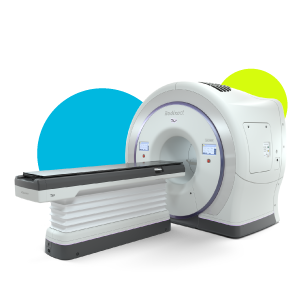Radiation therapy faces multifaceted challenges today, including rising patient demand, complex workflows associated with advanced technology, software integration challenges as well as the need for comprehensive training and technical support to ensure confident delivery of radiotherapy. Additionally, there are accessibility barriers that result in huge gaps in patient care today.
Let’s dive into a closer examination of some of these challenges and delve into their intricacies and explore potential solutions.
Increasing patient demand
Advanced technology
Workflow complexities
Accessibility barriers
Training and support
What can Accuray do to help resolve some of these challenges?
Quality of care:
Efficiency of care:
Confidence in care:
Conclusion
At Accuray, our goal is to give healthcare professionals access to highly precise treatment solutions that enable the delivery of exceptional quality treatments with efficiency and confidence to help them face current radiotherapy challenges. Developing radiotherapy solutions that evolve with patients’ needs is critical in a continuously changing environment. We’re here to equip you to build a resilient department in the fight against cancer. Together, we can advance towards a world where cancer is met with unwavering certainty and compassionate care, empowering patients, and driving future advancements
References
- Cancer Tomorrow (iarc.fr) https://gco.iarc.fr/tomorrow/en/dataviz/isotype
- Chandra RA, Keane FK, Voncken FEM, Thomas CR Jr. Contemporary radiotherapy: present and future. Lancet. 2021 Jul 10;398(10295):171-184. doi: 10.1016/S0140-6736(21)00233-6. Epub 2021 Jun 21. PMID: 34166607.
- Halvorsen P, Gupta N, Rong Y. Clinical practice workflow in Radiation Oncology should be highly standardized. J Appl Clin Med Phys. 2019 Apr;20(4):6-9. doi: 10.1002/acm2.12555. Epub 2019 Mar 12. PMID: 30861297; PMCID: PMC6448160.
- Maitre P, Krishnatry R, Chopra S, Gondhowiardjo S, Likonda BM, Hussain QM, Zubizarreta EH, Agarwal JP. Modern Radiotherapy Technology: Obstacles and Opportunities to Access in Low- and Middle-Income Countries. JCO Glob Oncol. 2022 Jul;8:e2100376. doi: 10.1200/GO.21.00376. PMID: 35839434; PMCID: PMC9812473.
- Jaffray DA, Knaul F, Baumann M, Gospodarowicz M. Harnessing progress in radiotherapy for global cancer control. Nat Cancer. 2023 Sep;4(9):1228-1238. doi: 10.1038/s43018-023-00619-7. Epub 2023 Sep 25. PMID: 37749355.
- Quality assurance in radiation | IAEA









